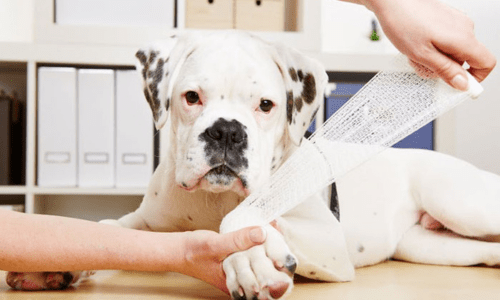Emergencies can happen at any time, and when it comes to your pet, being prepared can make all the difference. Whether it’s a minor injury or a sudden illness, having a basic understanding of pet first aid helps you respond quickly and effectively. While first aid is never a substitute for veterinary care, your actions in the first few moments of an incident can be critical.
At Woonona Petfoods, we believe every pet owner should be equipped with the knowledge and tools to handle common emergencies. Here’s what you need to know to be ready if your pet needs urgent care.
Why Pet First Aid Matters
Pets are naturally curious and energetic, which can lead to unexpected injuries, cuts from sharp objects, heatstroke during summer walks, allergic reactions, or accidental ingestion of harmful substances. Knowing how to act swiftly and safely can reduce pain, prevent further harm, and even save your pet’s life.
Understanding pet first aid is also empowering. It reduces panic, allows you to assess situations calmly, and bridges the gap while you seek veterinary help.
Essential Items for a Pet First Aid Kit
Just like you keep a first aid kit for yourself, every pet owner should have one ready at home, and ideally a smaller version in the car or travel bag.
Your pet’s first aid kit should include:
-
Gauze and non-stick bandages
-
Antiseptic solution (like chlorhexidine)
-
Saline for eye or wound flushing
-
Tweezers and blunt-ended scissors
-
Digital thermometer (ear or rectal for pets)
-
Latex or nitrile gloves
-
Styptic powder (for nail bleeding)
-
Hydrogen peroxide (only for vet-advised vomiting)
-
Muzzle or towel (to safely restrain an injured pet)
-
Emergency contact numbers (vet, poison hotline, after-hours clinic)
At Woonona Petfoods, we stock a wide range of essentials to help you build a tailored first aid kit for your pet. For a ready-to-go option, the Value Plus First Aid Kit is an excellent choice. It’s a comprehensive solution for horses, dogs, cats, and other animals, ideal for use in the home, stables, car, or while travelling. Housed in a durable and easy-to-carry bag, this kit includes everything from bandages and antiseptic wipes to gloves and wound care tools, ensuring you’re equipped for a range of situations.
Common Pet Emergencies and First Aid Responses
While you can’t prepare for every scenario, it’s helpful to know how to respond to some of the most common situations:
1. Cuts and Scrapes
Clean the area gently with warm water or saline. Apply antiseptic and cover with a non-stick bandage if bleeding. Minor cuts can usually be treated at home, but if the wound is deep or continues to bleed, visit your vet promptly.
2. Heatstroke
Common in summer, heatstroke is a serious risk, especially for dogs. Symptoms include panting, drooling, weakness, vomiting, or collapse. Move your pet to a cool area immediately. Offer small sips of water and use damp towels on their paws and belly.
3. Poisoning or Toxin Ingestion
If your pet has eaten something they shouldn’t, like chocolate, grapes, household chemicals, or certain plants, call your vet immediately. Never induce vomiting unless advised by a professional.
4. Choking
If your pet is gagging, pawing at their mouth, or unable to breathe, check their mouth (only if it’s safe) and try to dislodge the object. Get to the vet as quickly as possible.
5. Tick Paralysis
In Australia, paralysis ticks can be fatal. Check your pet’s coat daily during tick season. Signs include wobbliness, vomiting, and difficulty breathing. If you suspect a tick, remove it with a tick remover and head to your vet immediately.
We recommend routinely using a tick preventative such as NexGard Spectra, Bravecto, or Simparica Trio, which offer strong protection against ticks.
6. Broken Nails or Bleeding Paws
Nail injuries can bleed heavily. Apply styptic powder or cornstarch with pressure. For cracked paw pads, clean the area and wrap gently. Limit walking until it heals.
7. Seizures
If your pet has a seizure, stay calm. Move objects away to prevent injury but do not restrain them. Time the seizure and contact your vet once it ends. Keep the environment quiet and dim.
8. Eye Irritation or Injury
If your pet’s eye is red, swollen, or has discharge, flush gently with saline and keep them from scratching. Avoid using human eye drops unless instructed by a vet.
Knowing When to See the Vet
While minor issues can sometimes be managed at home, any of the following require immediate veterinary care:
-
Persistent bleeding
-
Difficulty breathing
-
Collapse or unconsciousness
-
Inability to urinate or defecate
-
Repeated vomiting or diarrhoea
-
Eye injuries
-
Seizures lasting more than 2 minutes
-
Suspected poisoning
Never delay seeking help if you’re unsure. First aid is about stabilising, not replacing vet care.
Pet First Aid Courses and Resources
Consider enrolling in a pet first aid course through your local vet, pet trainer, or animal rescue group. These hands-on workshops teach life-saving skills like CPR, wound care, and emergency assessment.
There are also many trusted online resources, like the Australian Animal Poisons Centre, which offers 24/7 guidance if your pet ingests a toxin.
Be Prepared, Not Panicked
Accidents are a part of life, but preparation can make all the difference. By building a pet first aid kit, learning key responses, and knowing when to seek help, you’re giving your furry friend the best possible protection.
At Woonona Petfoods, we’re more than a store, we’re part of your pet care team. Drop by for expert advice, recommended first aid products, and everyday items to keep your pet safe, happy, and healthy. Let us help you be ready for anything, because your pet depends on you when it matters most.






